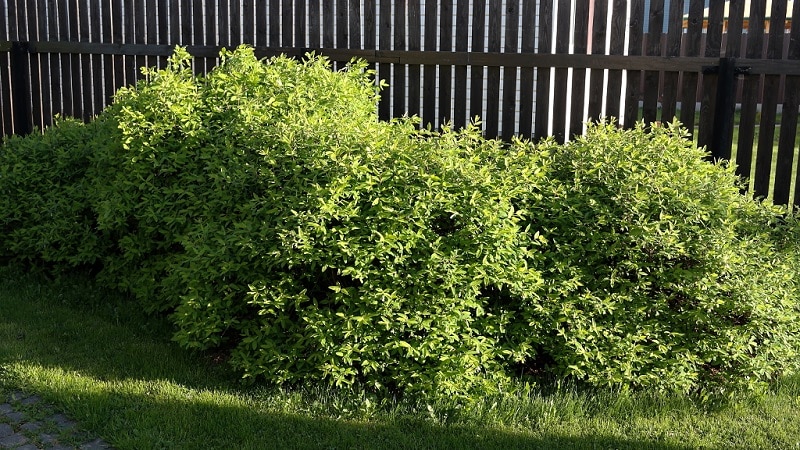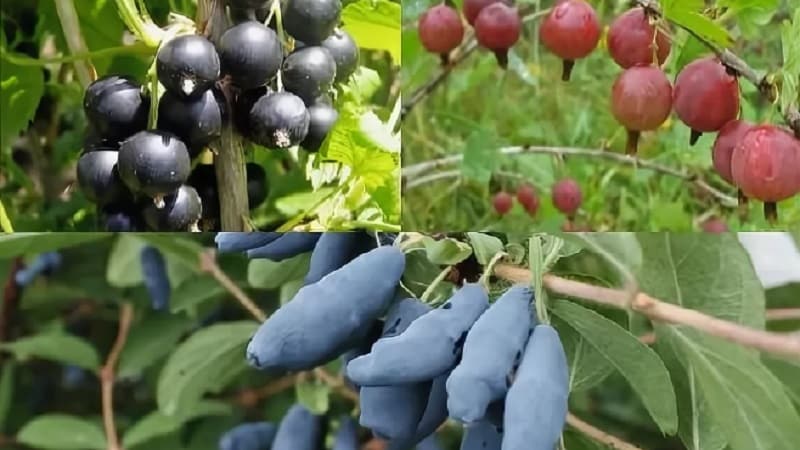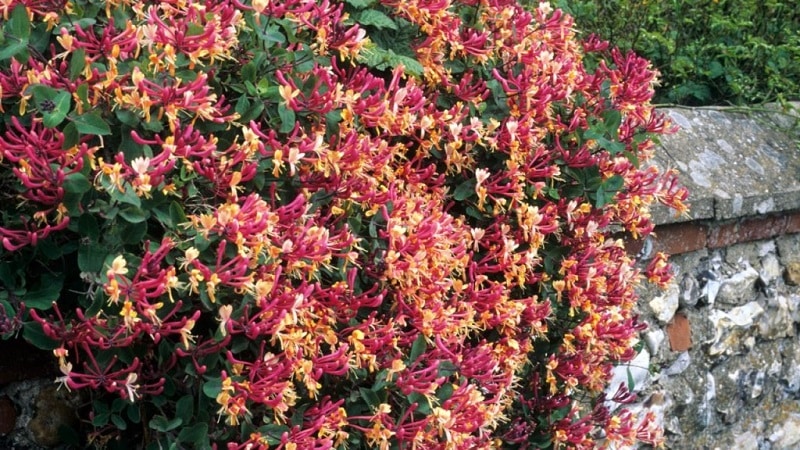Where is it best to plant honeysuckle: in the shade or in the sun, and what other criteria should you use to choose a place?
The correct planting site is one of the main conditions for the quality development and fruiting of honeysuckle. The choice of site determines the growth rate, disease resistance, yield, fruit quality, fruiting time and longevity. The right location will allow you to enjoy harvests for 20 years or more.
Where is it better to plant honeysuckle: in the shade or in the sun?
Honeysuckle generally unpretentious, but requires attention and labor. Choosing a site for planting begins with determining the level of illumination of the area. There are a few simple rules:
- For most varieties, especially climbing and edible varieties, open, sunny areas are ideal.
- With good lighting of the upper branches, it is desirable that the lower ones are in the shade.
- In light shade, honeysuckle develops normally, but fruiting in such conditions is significantly reduced.
- Forest varieties tolerate openwork shade well and thrive under the shade of trees and large shrubs.
- Heavy shading slows down the development of honeysuckle.

What is the reason for this?
Honeysuckle requires good lighting for the following reasons::
- the plant belongs to light-loving crops;
- the shrub does not bloom well in the shade, which negatively affects its productivity and decorativeness;
- in open places, plant pollination is more effective than in shady places;
- Sun-ripened berries taste better.
Almost all varieties of honeysuckle develop well in sunny places. and only a few forms can tolerate shade without compromising their decorative or fruiting qualities. For this reason when planting shrubs give preference to illuminated areas.
Other requirements for choosing a location
In addition to light, plant development is influenced by factors such as humidity, soil quality, wind protection. Taking these features into account, you can get strong bushes and avoid the need to replant them.
Soil moisture
Soils suitable for growing honeysuckle, must be:
- loose in structure (have good water and breathability);
- moisture-intensive (retain moisture);
- drained (without stagnation of groundwater, since the shrub is not intended for growing on swampy heavy soils, especially in closed basins).
If necessary, plant honeysuckle in wetlands They make bulk hills from loose, fertile soil. The height of the hill is at least 50 cm (root depth), diameter is 150-200 cm. When planting on waterlogged soils, a drainage layer of crushed stone, gravel or broken brick is laid at the bottom of the planting hole. Layer thickness – at least 7 cm.
Soil quality
The crop is not picky about soil composition. However, on poor sandy soils the shrub develops poorly. The ideal soil mixture for a planting hole or mound when growing honeysuckle includes the following components:
- turf soil - 3 parts;
- humus or peat – 1 part;
- sand - 1 part.
In terms of pH, the substrate required is neutral, with a value of 7-8. The culture especially does not like acidic soil (pH 1-5).Acidic soil is sprinkled with dolomite flour 6 months before planting: 500 g per 1 square meter. m with highly acidified soils and 400 g per 1 sq. m at slightly acidic levels (5-6.5).

windiness
The culture does not like windy areas. Lack of wind protection can lead to the following consequences:
- despite the high winter hardiness of the plant, winds in frosty weather can severely damage the branches and buds;
- Honeysuckle flowers and fruits have weak attachment to the stalk, which increases the risk of falling off in windy weather.
Tall trees can provide wind protection for honeysuckle. and bushes, buildings and fences.
Important. Observe planting conditions in which wind-protective plantings or buildings will not shade the crop.
Neighborhood rules for honeysuckle
Choice of neighbors for crops - the most important condition for productivity. Some plants harm honeysuckle, while others themselves suffer from such coexistence.
Possible neighborhood:
- Black and red currants. Due to the great similarity of crops and their high chemical compatibility, plants not only get along well, but even increase each other’s productivity.
- Gooseberries coexist well with honeysuckle, provided that the distance between seedlings is at least 150 cm.
- The shrub gets along with such ornamental crops as juniper, rose hips, fir, garden maple, and hawthorn.
- Annual crops have a good effect on honeysuckle, increasing its productivity: cucumbers, tomatoes, peppers, watermelons.
- Excellent neighbors are flowers that have a pronounced aroma: forget-me-nots, lilies of the valley, calendula and others. They attract insects, which has a positive effect on plant pollination.
Undesirable neighborhood:
- An apple tree growing next to a honeysuckle will become a competitor in the fight for nutrients, which will affect both crops.
- Raspberry is a rather aggressive shrub that interferes with the normal functioning of nearby plants.
- Cherries provide a lot of shade and strong growth, which over time will create unfavorable conditions for growing the crop.
- Honeysuckle has a depressing effect on pear trees.
They will be good neighbors for honeysuckle other honeysuckle varieties, since it is a cross-pollinated plant.

At what distance to plant bushes
The choice of placement scheme for honeysuckle bushes depends on functional purpose of plantings.
To obtain a high yield the distance between seedlings in a row is 150-200 cm. There should be at least 200 cm between rows.
Creating decorative groups from honeysuckle bushes, the distance is kept within 250-300 cm. By growing a hedge, the distance between seedlings can be reduced to 50-100 cm.
Attention. When planting honeysuckle near fences or buildings, you must retreat 50-150 cm from them.
Features of choosing a place on the site for edible honeysuckle
To ensure a rich harvest of edible honeysuckle, the plot for landing are chosen especially carefully. It is important to comply with the following conditions:
- the place is open to sunlight throughout the day;
- plants are protected from strong winds;
- other large plants are planted at a distance of no closer than 4 m;
- the area of the plot allows you to grow several varieties of honeysuckle for pollination;
- a place with a loose soil structure and rich nutritional composition is selected or prepared;
- the possibility of timely watering, fertilizing and mulching the bush is provided.
Compliance with all necessary conditions during planting will eliminate further labor costs for care. for the plant and ensure high yields.
For decorative
Decorative forms of honeysuckle less demanding on space, however in this case, some requirements must be met:
- climbing forms are light-loving, require support and do not tolerate winter winds;
- other decorative varieties tolerate light shade and proximity to large plants;
- Soil fertility is an important factor for lush greenery and flowering.
Despite the unpretentiousness of the culture, the choice of location plays an important role for its development and appearance.

What mistakes to avoid when choosing a landing site
The main mistakes that gardeners make when choosing a place for a crop are: to the following results:
- prolonged shading affects the yield and quality of berries;
- lack of wind protection significantly reduces yield;
- poor soil does not provide full growth and development of the plant;
- large plants growing nearby deprive the bush of necessary nutrition;
- the close location of groundwater has a detrimental effect on the root system of the bush;
- acidic soils negatively affect the fruiting and decorative appearance of honeysuckle: there are few berries, the leaves turn pale, and the plant looks sick.
Conclusion
With proper care, honeysuckle decorates the area and produces a rich harvest of valuable berries. A well-chosen place - fertile, illuminated and protected from the winds - is the key to the successful development of the shrub, its decorativeness and longevity.